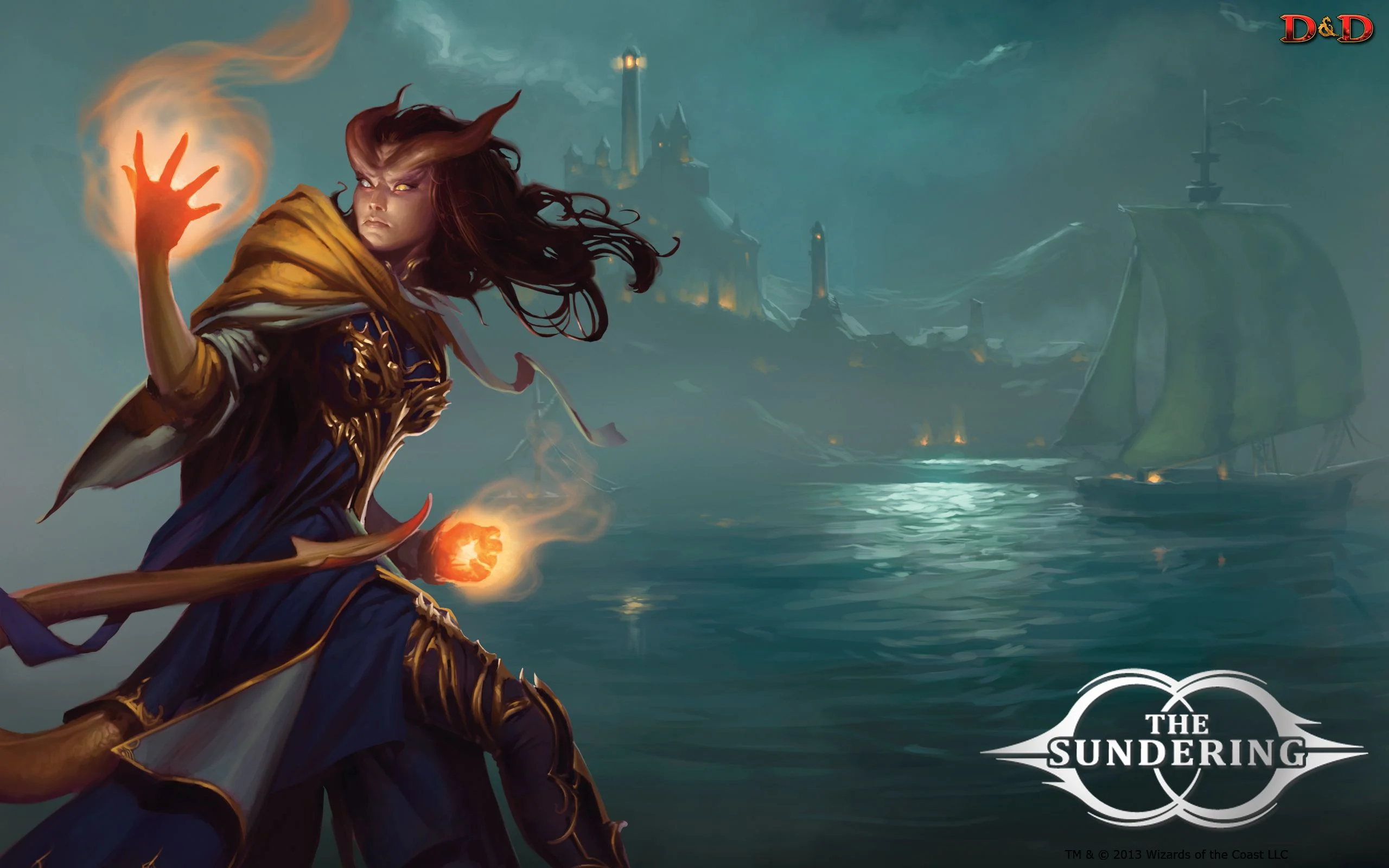Characteristics
Physical features
Tieflings are derived from human bloodlines, and in the broadest possible sense, they still look human. However, their infernal heritage has left a clear imprint on their appearance.
Their skin tones cover the full range of human coloration, but also include various shades of red, blue, white or dark violet. Their hair, cascading down from behind their horns, is usually dark, from black or brown to dark red, blue, or purple. Their blood is blue.
Tiefling can possess hooves and a tail, which tends to be thinner on females. Tail lengths vary in both males and females though they are often on the longer side. They have thick tails, four to five feet long, which lash or coil around their legs when they get upset or nervous.
Most Tiefling have horns. The horn itself has no nerve endings and can be removed; however, they can still become irritated, thus the Tiefling have developed balm. Tieflings' horns can take any of a variety of shapes: some have curling horns like a ram, others have straight and tall horns like a gazelle’s, and some spiral upward like an antelopes’ horns.
Their canine teeth are sharply pointed, and their eyes are solid colors—black, red, white, silver, or gold—with no visible sclera or pupil.
Biology
Tieflings have dominant genes, meaning there are no half-tieflings. Offspring born of crossbreeds will mostly inherit the tiefling traits.
Mental traits
Tieflings subsist in small minorities found mostly in human cities or towns, often in the roughest quarters of those places, where they grow up to be swindlers, thieves, or crime lords. Sometimes they live among other minority populations in enclaves where they are treated with more respect.
Lacking a homeland, tieflings know that they have to make their own way in the world and that they have to be strong to survive. They are not quick to trust anyone who claims to be a friend, but when a tiefling’s companions demonstrate that they trust him or her, the tiefling learns to extend the same trust to them. And once a tiefling gives someone loyalty, the tiefling is a firm friend or ally for life.
Lineages
The lineages and subspecies presented in this article are specific to Toriel, and may differ significantly from those found in Dungeons & Dragons. These lineages reflect the unique cultures, histories, and environments of Toriel.
Players are welcome to use the mechanics of any official or third-party lineage, but are encouraged to reflavor them as one of the lineages native to Toriel to better fit the world’s lore. Talk to your DM to find a narrative fit that works for your character and the setting.
Abyssal
The entropy of the Abyss call to tieflings who have the abyssal legacy. Horns, fur, tusks, and peculiar scents are common physical features of such tieflings, most of whom have the blood of demons coursing through their veins.
Chthonic
Tieflings who have the chthonic legacy feel the gloom of Hades. Some of these tieflings look cadaverous. Others have physical features in common, with a night hag, a yugoloth, or some other Neutral Evil fiendish ancestor.
Infernal
The infernal legacy connects tieflings to the Seven Hells. Horns, spines, tails, golden eyes, and a faint odor of sulfur or smoke are common physical features of such tieflings, most of who trace their ancestry to devils.
Names
Tiefling names fall into three broad categories. Tieflings born into another culture typically have names reflective of that culture. Some have names derived from the Infernal language, passed down through generations, that reflect their fiendish heritage. And some younger tieflings, striving to find a place in the world, adopt a name that signifies a virtue or other concept and then try to embody that concept. For some, the chosen name is a noble quest. For others, it’s a grim destiny.
Male Infernal Names: Akmenos, Amnon, Barakas, Damakos, Ekemon, Iados, Kairon, Leucis, Melech, Mordai, Morthos, Pelaios, Skamos, Therai
Female Infernal Names: Akta, Anakis, Bryseis, Criella, Damaia, Ea, Kallista, Lerissa, Makaria, Nemeia, Orianna, Phelaia, Rieta
“Virtue” Names: Art, Carrion, Chant, Creed, Despair, Excellence, Fear, Glory, Hope, Ideal, Music, Nowhere, Open, Poetry, Quest, Random, Reverence, Sorrow, Temerity, Torment, Weary
Notable members









Comments